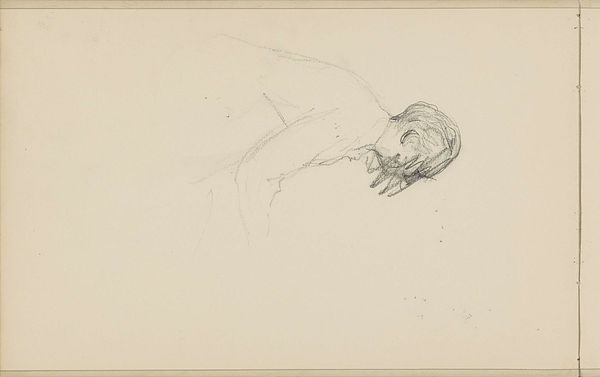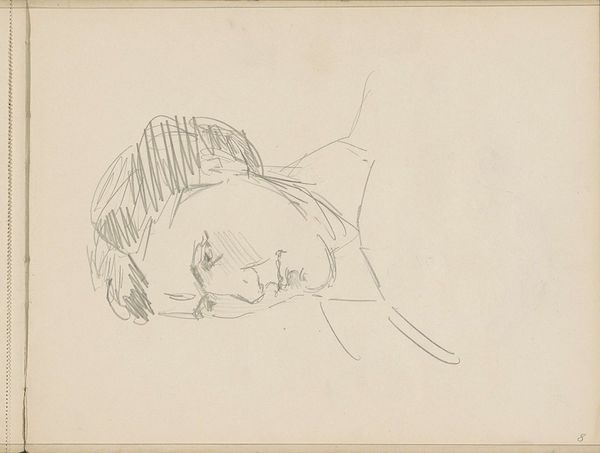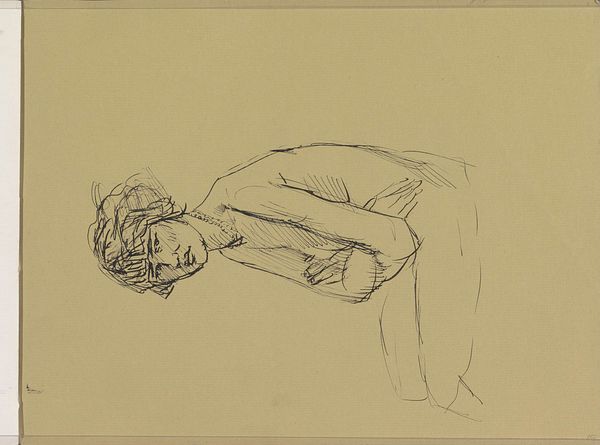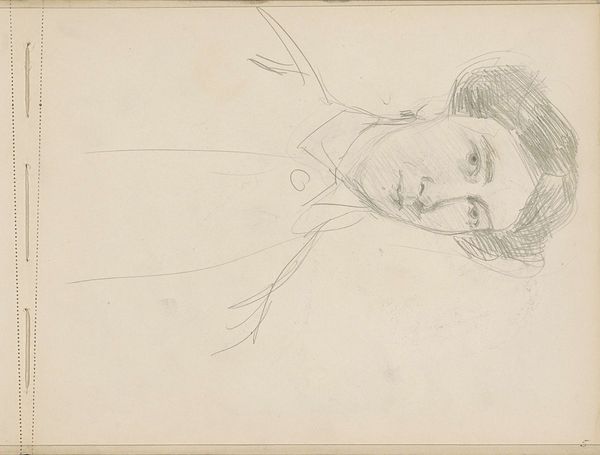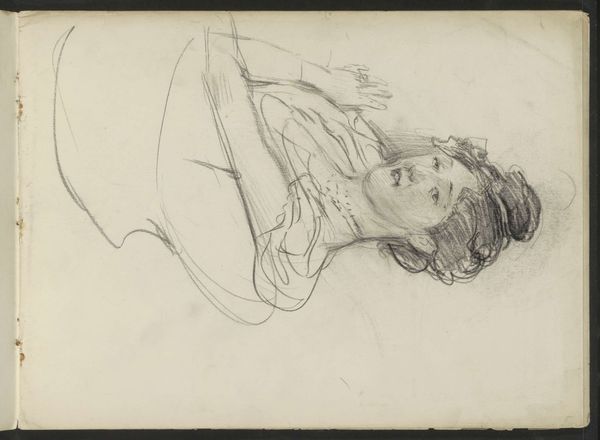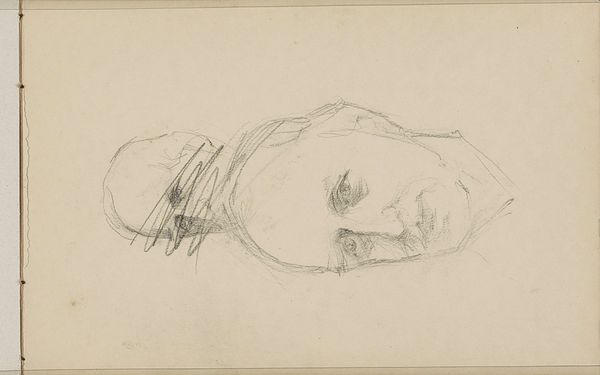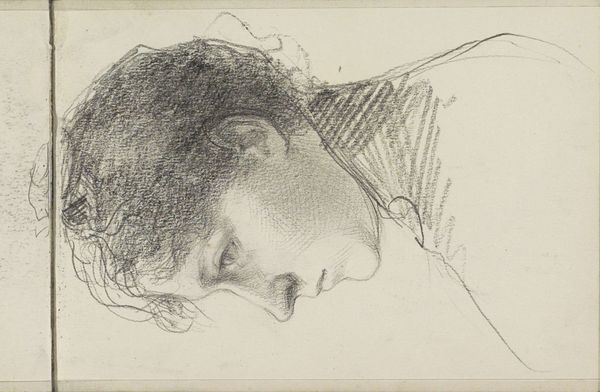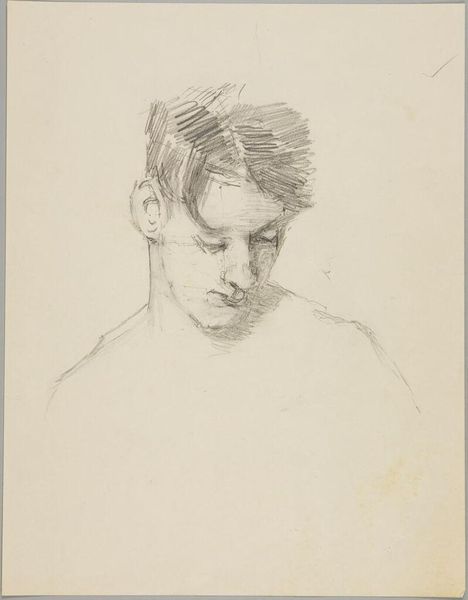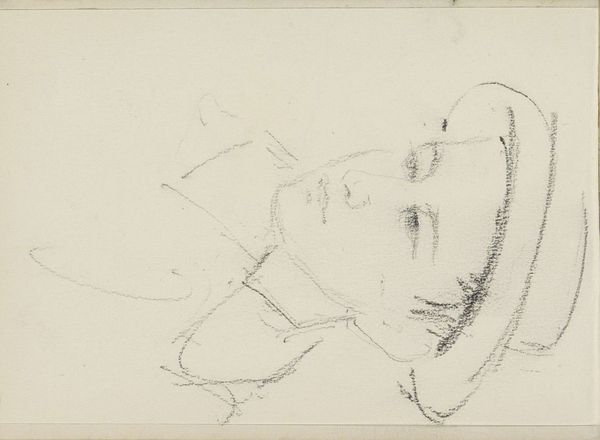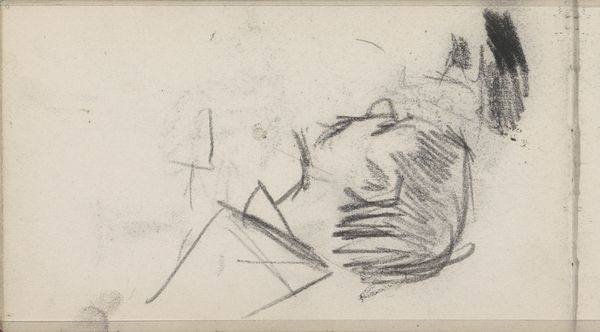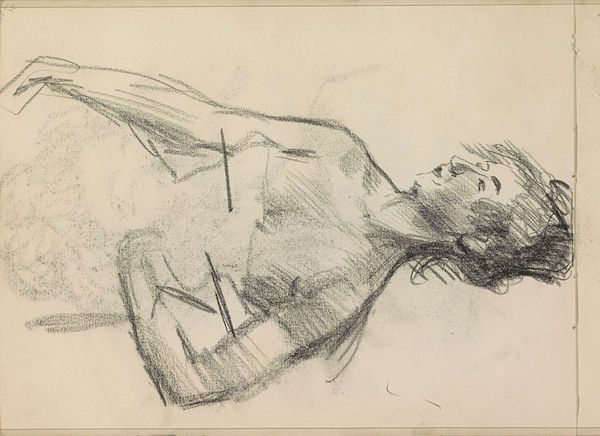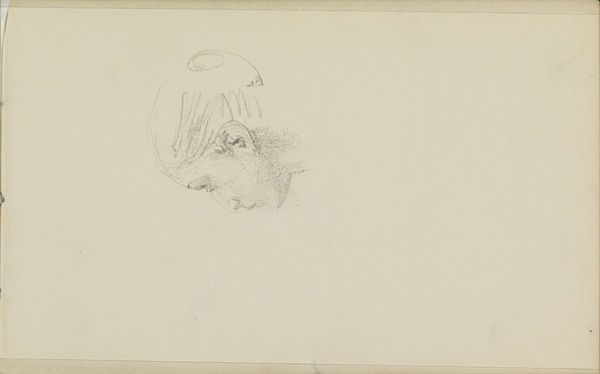
drawing, pencil, graphite
#
portrait
#
drawing
#
pencil sketch
#
etching
#
figuration
#
pencil
#
graphite
#
pencil work
#
academic-art
Copyright: Rijks Museum: Open Domain
Curator: This intriguing sketch, titled "Kop van een man, in profiel naar links," which translates to "Head of a man, in profile to the left," is currently held here at the Rijksmuseum. Though undated, scholars place its creation sometime between 1865 and 1913. Editor: There’s a certain vulnerability conveyed through such sparse lines. The downward gaze suggests introspection, perhaps even resignation. What do we know about the paper itself? Curator: The artwork has been made with graphite and pencil; and note how the choice of these humble materials emphasizes the provisional nature, like an artist figuring something out. We see a close observation and direct interaction, a record of material engagement of a maker using very rudimentary methods to describe the form. Editor: And how fascinating to consider the implications of depicting a man in profile! Historically, a profile often symbolized power, like in ancient coins. Here, however, that convention is stripped bare. He's facing "to the left," which culturally is usually to signify the less important and sinister aspects. I detect none of this tradition. Instead, I see a raw and unfiltered representation. The downcast head speaks volumes about burdens of being alive and human. What might the choice of profile signify in relation to artistic process, if not historical symbolism? Curator: A materialist would also say the format—this small-scale drawing—encourages an intimate, hands-on process for the artist. Pencil and graphite allowed the artist immediacy. The nature of the image is tied directly into the production process, into the way the artist worked this simple medium with their own two hands! This allows for endless edits, subtle erasures, and is very resourceful, inexpensive art creation that is quite accessible! Editor: It certainly begs the question, who was this man? The averted gaze gives a universal air, less the study of a particular person but that of humankind’s emotional core and the ability to project various expressions to even roughly-sketched visual inputs. And I keep returning to those sparse lines; so potent in what they leave unsaid, how they suggest far more than they explicitly define. Curator: I appreciate your insight! Looking at it through that symbolic lens really highlights the enduring relevance and how this object relates to history, beyond just art processes and craft production of common sketches. Editor: Indeed. It's in contemplating both the "how" and the "why" that this relatively unassuming sketch finds resonance, I think. Thank you.
Comments
No comments
Be the first to comment and join the conversation on the ultimate creative platform.

